Uluru – your guide to Australia’s mysterious centre
21.02.2024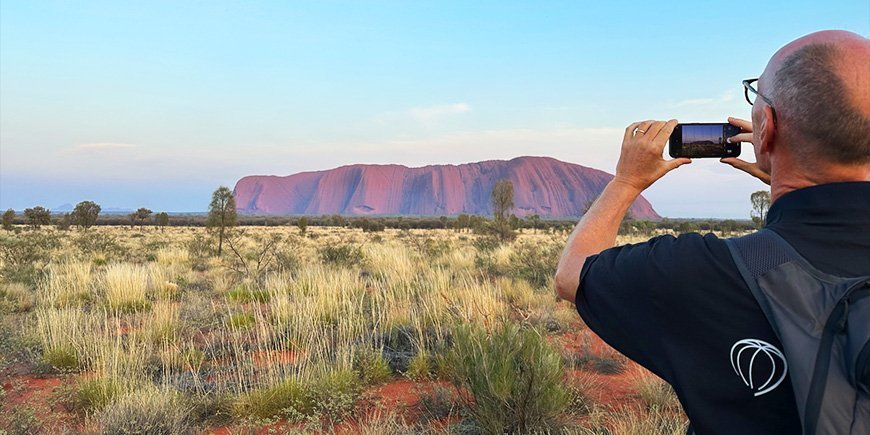
One of the most iconic places you can experience on a visit to Australia is Uluru.
The massive sandstone monolith that towers over the Australian outback impresses everyone who gets the chance to to observe it.
Below is our guide to your visit to Uluru, the mysterious centre of Australia.
What is Uluru?
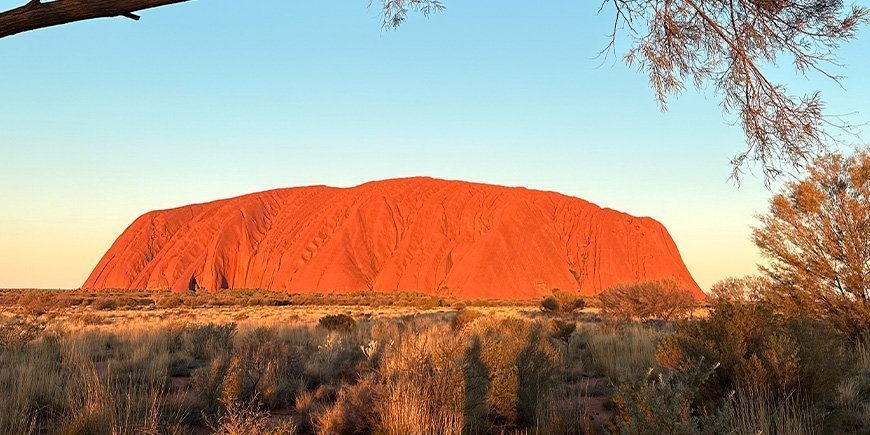
Located in the Uluru-Kata Tjuta National Park in central Australia, about 440 kilometres south-west of Alice Springs, is Uluru, formerly known as Ayers Rock.
Uluru is a large, reddish sandstone monolith that rises majestically from the surrounding desert landscape. The more than 500 million-year-old monolith stands an impressive 348 metres, but this is only the visible top of the stone. In fact, Uluru is up to 6 km deep underground!
In addition to its impressive geological character, Uluru is also a central part of the cultural and spiritual traditions of the local Anangu people.
What does Uluru mean?
The name Uluru derives from the local Anangu language and has different meanings depending on the context.
Generally, it refers to something large or impressive.
For the Anangu people, Uluru also has deep spiritual significance as it is associated with many Dreamtime stories and ceremonies. The Anangu people have inhabited the national park for 60,000 years, so if you talk to them during your visit, you’ll experience a very special local story.
The history behind Uluru
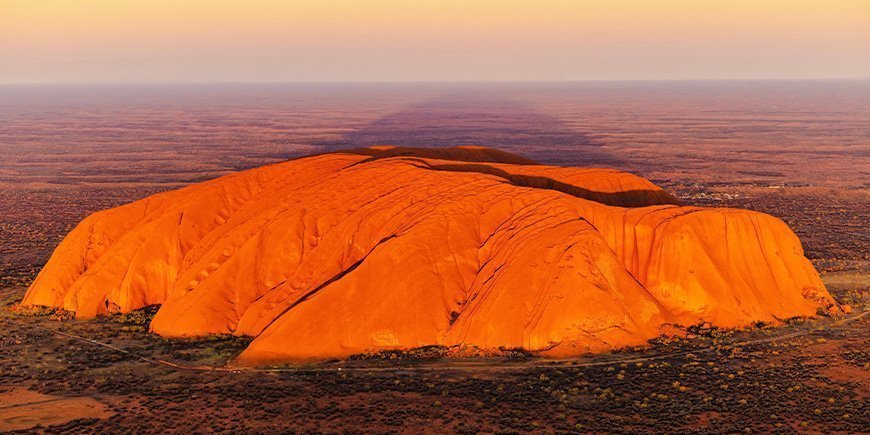
Uluru has an impressive history dating back more than 500 million years, when Uluru and Katja Tjuta began to form.
According to stories told by the native people, Uluru has roots going back to the beginning of time, when three ancestors from the region played a decisive role in the creation of the landscape.
However, it was not until the 1870s that Uluru was discovered by outsiders – the explorers William Gosse and William Giles – when they arrived in the Australian outback.
Gosse named the sandstone monolith Ayers Rock after the then governor (chief secretary) of South Australia, Sir Henry Ayers. At the same time, Giles named the Kata Tjuta rock formations The Olgas after the reigning Queen Olga of Wurttemberg.
In the early 20th century, the Australian government declared ownership of the land, and it was not returned to the Anangu people until 1983.
Why isn’t it called Ayers Rock anymore?
When the land was returned to the Anangu people in 1983, the name of the sandstone monolith was still Ayers Rock.
Ayers Rock was the most commonly used name until 1993, when it was officially changed to Ayers Rock/Uluru, making the site the first area in the Northern Territory to have two names.
In 2002, the Regional Tourism Association requested that the stone’s names be changed around. This led to the rock now being officially called Uluru/Ayers Rock.
Uluru is now therefore the most correct name, which at the same time also shows respect for and recognition of the Anangu people’s ownership of the land.
When is the best time to visit Uluru?
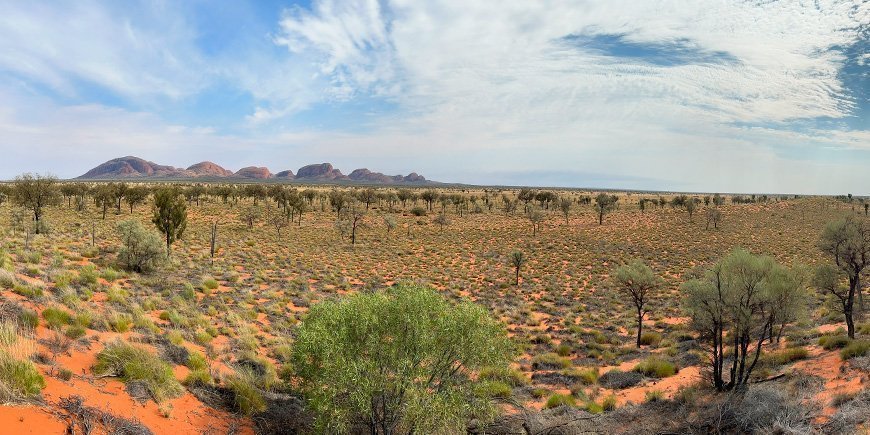
Uluru is a fantastic experience all year round,
Central Australia, where Uluru is located, experiences very hot summers (our winter), with daytime temperatures reaching 45 degrees. So if you’d like to experience Uluru in more comfortable temperatures, you should visit the monolith in the cooler months of May to September, when you can experience milder temperatures and clear skies.
Although not exactly what you associate with the Australian outback, in the Australian winter, i.e. in the months of June to August, night frosts and cold days can be experienced. So, if you choose to visit Uluru in the cold months, it’s important to pack some warm clothes.
No matter when you decide to travel to the red heart of Australia, Uluru will undoubtedly leave you in awe of the natural magic and deep cultural foundations that make this place so unique. Take the time to immerse yourself in the area’s history and be inspired by the magnificent beauty that Uluru represents.
What can I experience at Uluru?
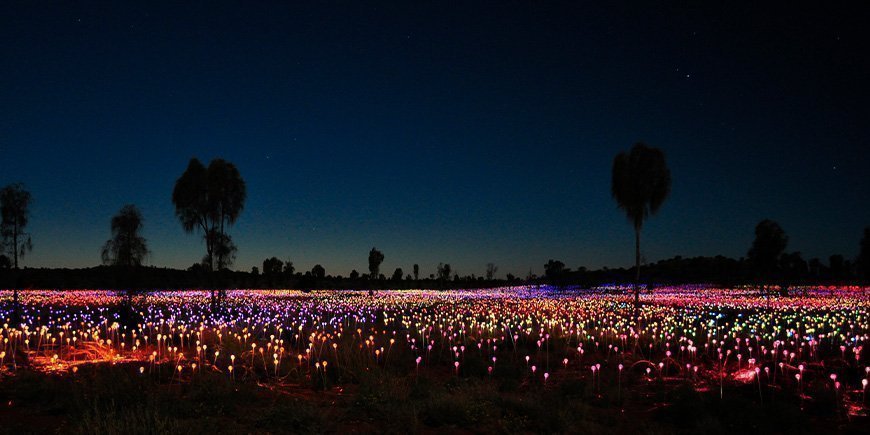
Uluru offers visitors a host of experiences: From spiritual walks to light installations. Here’s a look at some of the activities you can experience in this enchanting landscape:
Base walk: Walk around Uluru on the base walk and experience the changing colours at sunrise and sunset. You can choose to walk the entire 10 km walk or selected parts of it – each section has something different to offer. Keep an eye out for the area’s many beautiful birds.
Kata Tjuta: Visit the nearby Kata Tjuta, a group of large rock formations that also have great cultural and geological significance. One of the most popular walks through the scenic rock formations is the walk through Walpa Gorge. Look forward to hearing the guide talk about the indigenous people’s connection to the site.
Cultural experiences: Come on guided tours and cultural experiences organised by the local Anangu people, which give you an insight into the deep, cultural significance of the area.
Field of light: Bruce Munro’s art installation, Field of Light, has been impressing visitors since 2016 with its 50,000 solar spindles and lamps which illuminate the desert after sunset.
You are welcome to take photographs, but respect the sacred sites
Uluru is one of the most photographed natural phenomena in the world, so it’s fine to take out your camera during your visit. However, when taking photos it’s important to remember that certain parts of Uluru and the surrounding area are sacred to the Anangu people. These areas hold stories and traditions that have been part of Anangu culture for thousands of years, and you can show them respect by leaving your camera in your bag.
This applies, for example, to places like Mala Puta and Pulari, both important pages in the Anangu people’s history book. At Mala Puta, the older women paint on the walls as their way of passing on the stories to the younger generations.
It’s also a good idea to ask permission before taking photos of the Anangu people.
I’m ready! What should I do now?
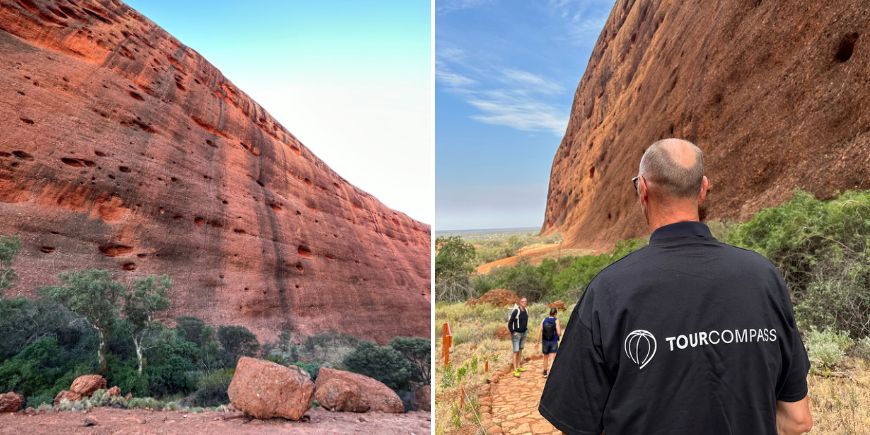
It’s absolutely fantastic to experience this magnificent sandstone monolith.
If you’re good to go, take a look at our tours to Australia where Uluru is part of the itinerary and choose your dream tour to the Australian desert.
Want to experience the magic of Uluru?
-
General Info
Receive all the latest news and offers delivered to your inbox!
Registered in England.
Registered Office:
Nucleus House 2
Lower Mortlake Road
Richmond, TW9 2JA
Company no.: 11454726

E-mail: info@tourcompass.co.uk
ATOL protected no. 10558.
ABTA member no. Y6104.
Read more.